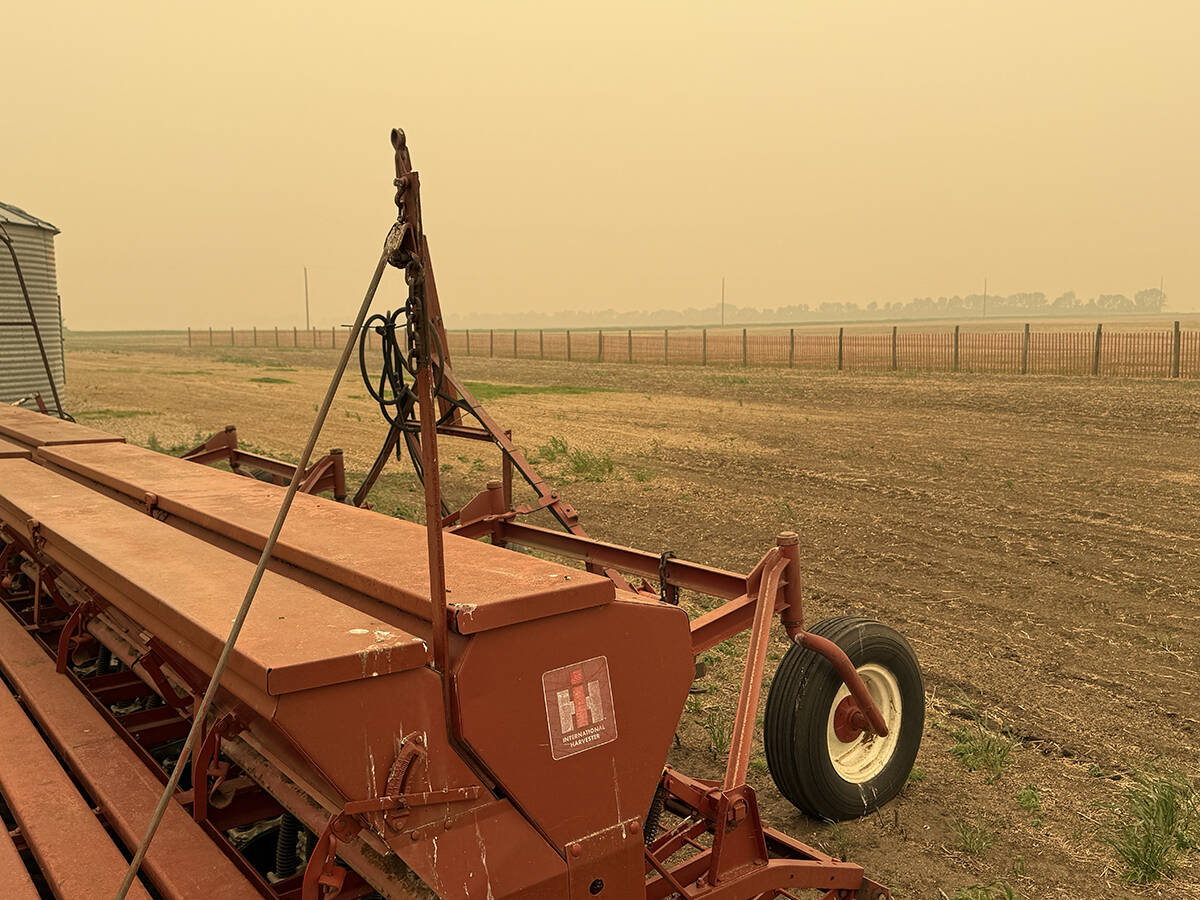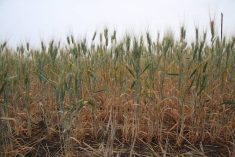SASKATOON — Durum crops are a bit of a mixed bag in 2025.
Areté Market Intelligence is forecasting 4.33 million tonnes of production in Italy, which is Canada’s largest durum customer.
That would be a 25 percent increase over last year’s disastrous harvest.
Read Also

Wildfires have unexpected upside this year
One farmer feels smoke from nearby wildfires shrouded the July skies and protected his crop from the sun’s burning rays, resulting in more seeds per pod and more pods per plant.
Rossella Polito, an Italian durum farmer who posts as @spiga_dorata on the X social media platform and writes the Durum Report for Black Silo Commodity Reports, said it is premature to make overly optimistic projections.
“However, scouting the fields, the crop is in very good condition and seems very promising almost everywhere in the key areas of South Italy,” she said in an email.
Polito is forecasting a crop of four million tonnes today, but her estimate could change in about a month because the crop has yet to enter its flowering and kernel-ripening phases, and durum is very weather-sensitive during those stages of development.
“If a bumper crop is realized, obviously import needs will consequently drop from last year, but Italy is never self-sufficient,” she said.
“And import needs depend also on the quality of the new crop.”
Durum crops in the rest of the European Union look promising as well, although France is showing early warning signs in certain areas of the country.
Turkey’s crop was hit with a one-in-50-year frost in April. Temperatures dropped as low as -15 C in parts of Central Anatolia.
Damage has been reported in crops that were at an advanced stage of development, but there was no damage to crops that were still in the tillering phase.
Polito said the damage is difficult to quantify but the severity of the frost shocked Turkish farmers.
“I won’t be surprised if the durum crop this year won’t be as good as the last two years,” she said.
Turkey has come out of nowhere to become a major exporter of the crop in recent years.
Polito had no news about Russia’s crop but said conditions in North Africa appear to be mixed.
The U.S. Department of Agriculture’s Foreign Agricultural Service (FAS) estimates that Morocco’s wheat production will be up from last year but below the 10-year average despite heavy rains in March.
Limited precipitation resulted in delayed planting, followed by prolonged dry conditions that persisted from December through February.
Early-seeded crops are expected to produce yields well below average, while late-seeded crops look more promising.
The FAS is forecasting 1.1 million tonnes of durum production, up from 700,000 tonnes last year.
Total wheat imports for 2025-26 are pegged at 7.3 million tonnes. That would be a slight decrease from 2024-25 levels but 42 percent higher than the 10-year average.
Canada supplied 14 percent of Morocco’s wheat imports in 2024-25.
Algeria’s crop is in better shape.
Durum accounts for 45 per cent of Algeria’s total cereal crop area, followed by barley at 33 per cent and bread wheat at 15 per cent.
The FAS is forecasting three million tonnes of total wheat production in 2025-26, which would be the same amount as the current marketing year.
Algeria is expected to import 9.2 million tonnes of wheat in the 2025-26 crop year, which begins July 1. That would also be the same amount as the current marketing year.
Canada has accounted for 16 per cent of Algeria’s total wheat imports through the first eight months of the 2024-25 campaign.
Algeria imported 860,000 tonnes of durum during that time, and it is likely that most of the 530,019 tonnes imported from Canada was durum.
Algeria’s president and minister of agriculture have stated that 2025 will be the last year the country imports durum.
Durum typically accounts for about 20 per cent of Algeria’s total wheat imports.
“(The FAS) forecasts that Algeria will continue to import durum wheat at least through the 2025-26 marketing year,” the FAS stated in a recent report.
Polito said Tunisa had “very favourable” weather and a good crop is expected, which would reduce its import needs.
Statistics Canada is forecasting that Canadian farmers will plant 6.37 million acres of durum, identical to last year.
The USDA believes farmers in that country will plant 2.02 million acres, a two percent drop.
Mexico’s crop is a disaster, according to the USDA. Total wheat production is expected to decrease 39 per cent to 1.6 million tonnes.
The USDA expects Mexico to export a paltry 50,000 tonnes of durum in 2025-26, down from 100,000 tonnes this year and 850,000 tonnes the previous year.
















